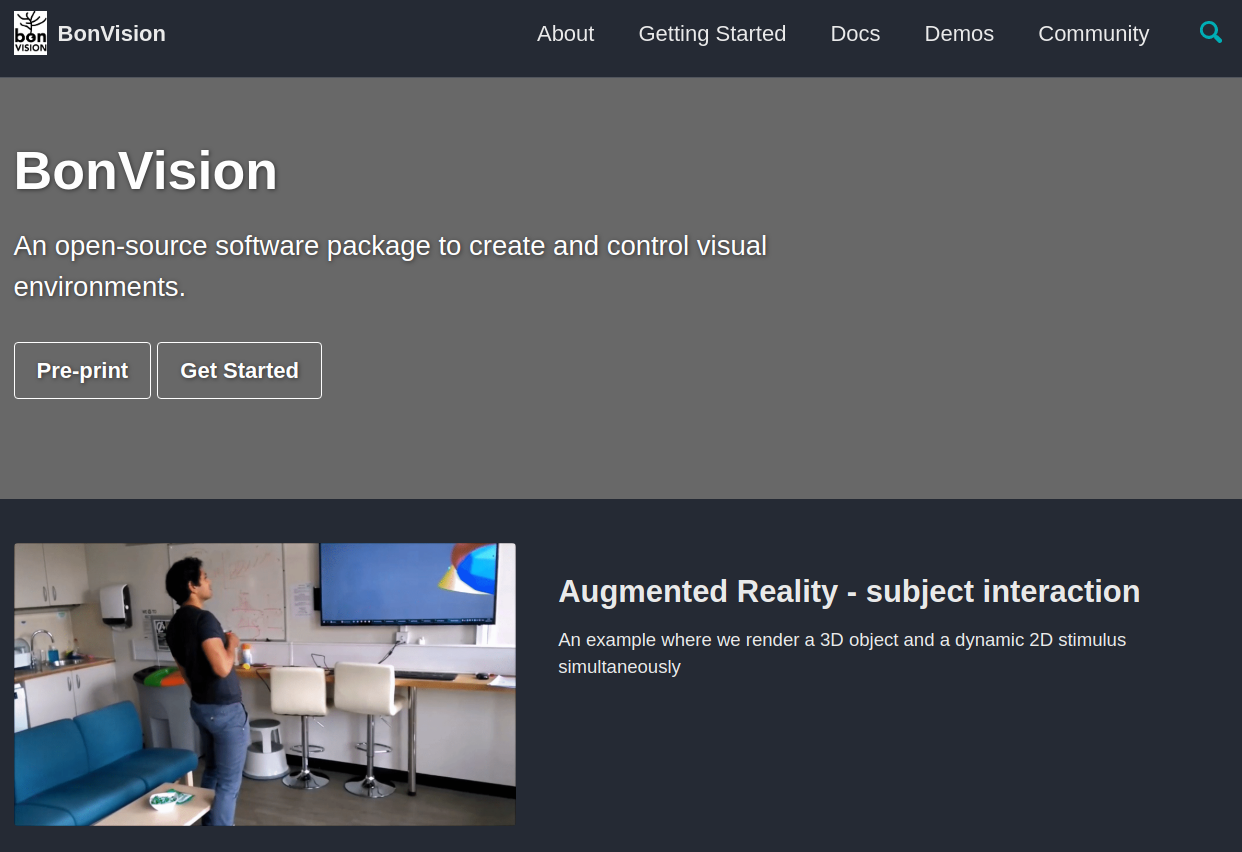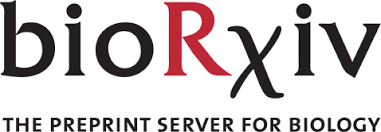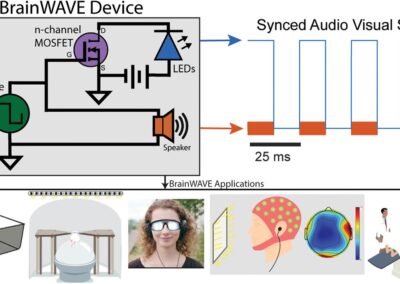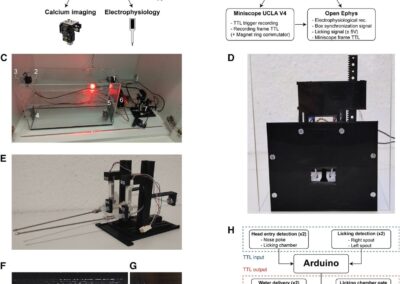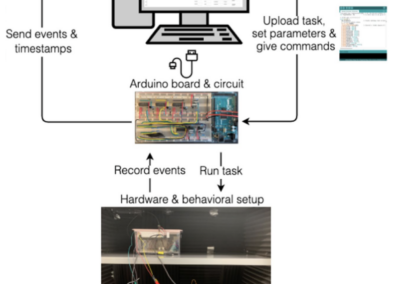BonVision
In a recent bioRxiv preprint, Gonçalo Lopes and colleagues from NeuroGEARS and University College London have shared information about BonVision — an open source software for creating and controlling visual environments.
With advances in computer gaming and software rendering, it is now possible to create realistic virtual environments. These virtual environments, which can be programmed to react to user input, are useful tools for understanding the neural basis of many behaviors. To expand access to this useful tool, Lopes and colleagues have developed BonVision, a software package for Bonsai which allows for control of 2D and 3D environments. Bonsai is a high-performance, open source, event-based language and which has already been widely used in the neuroscience community for control of closed-loop experiments with compatibility across a flexible range of input and outputs. The software features a modular workflow which allows users to specify parameters in 2D or 3D environments, which can be adapted to a number of display configurations. To demonstrate the utility of BonVision across species and common experimental paradigms, the team performed experiments in human psychophysics, animal behavior, and animal neurophysiology. Overall, this software provides maximal flexibility for application in a variety of experiments across species.
This research tool was created by your colleagues. Please acknowledge the Principal Investigator, cite the article in which the tool was described, and include an RRID in the Materials and Methods of your future publications. Project portal RRID:SCR_021491; Software RRID:SCR_021534
BonVision Website
Learn more about BonVision on github.io!
Read the Preprint
Read more about BonVision on bioRxiv!
Bonsai Documentation
Learn more about the Bonsai programming language on the project’s website!
Check out projects similar to this!


